Last week the Science Museum hosted a gala event to celebrate the 80th birthday of Valentina Tereshkova, the first woman in space. Roger Highfield, Director of External Affairs, tells us about the evening and the life of this remarkable woman.
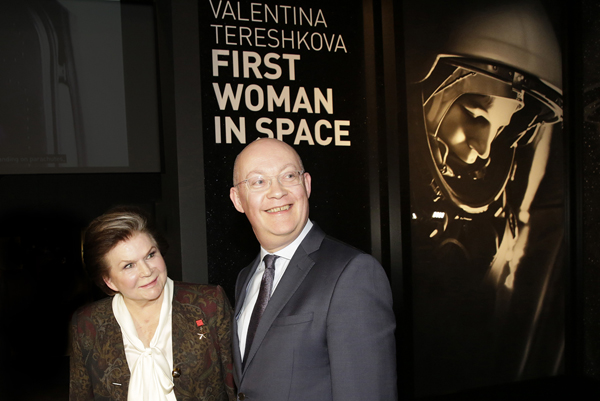
If there were such a thing a space royalty, then only one person could possibly be the queen of the cosmos: Valentina Tereshkova.
Last week Tereshkova, the first woman in space, and the only woman to travel solo in space opened an exhibit in the Science Museum to celebrate her life, a collaboration between the Museum and the Russian State Museum Exhibition Centre, ROSIZO.
That evening the space pioneer attended a gala celebration in honour of her 80th birthday.
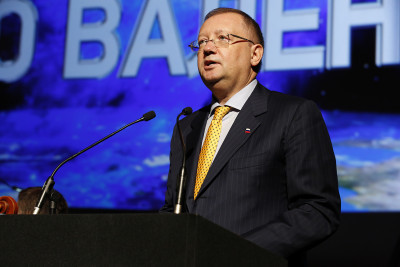
After welcoming speeches by Ian Blatchford, Museum Director, and the Ambassador of Russia to the United Kingdom Alexander Yakovenko, Dr. Tereshkova was welcomed with a standing ovation in the IMAX.
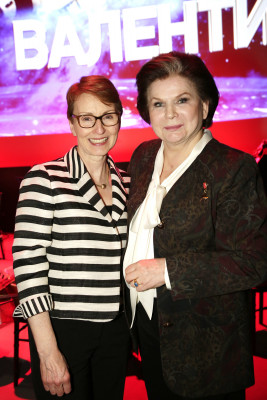
She referred to her “space sister”, Helen Sharman, the UK’s first astronaut who she supported and encouraged before her launch to the Mir space station in 1991. Sharman was among the VIP guests at the event which included Chair of the Science Museum Group Board of Trustees Dame Mary Archer, Monty Python’s Eric Idle, TV presenter Gia Milinovich, comedian and television presenter Dara Ó Briain, and science communicator Helen Czerski.
Before the gala performance, the audience was treated to a violin recital by Tereshkova’s grandson, Alexei. Then came a screening of Легенда о Валентине (Legend of Valentina), a specially commissioned film of her life, including previously unseen archival footage, accompanied by the Russian Philharmonic Orchestra and acclaimed virtuoso violinist Dmitri Kogan. The event was organized with the ArtPointFoundation, represented by Sabina Fatkullina.
Two years ago, Ian Blatchford persuaded Dr. Tereshkova to come to the Science Museum to be interviewed and reunited with Vostok 6, the spaceship that had been her home for almost three days, at the launch of the Museum’s blockbuster exhibition, Cosmonauts: Birth of the Space Age.
She declared at the time how the blackened craft, wrapped in the tattered remains of its thermal insulation, was “my lovely one, my best and most beautiful friend, my best and most beautiful man.”
Blatchford told those in attendance at her birthday gala celebration last week: “What better time to pay tribute to the achievements of such a heroic and pioneering woman than during Women’s History Month?” He added: “On her last visit to the Museum in 2015 she declared her wish to join me on a space flight, and I look forward to making plans with her this time around!”
She now greets Blatchford like an old friend, giving him a bear hug – “she almost cracked my ribs!” he protested.
Throughout the birthday celebrations, Tereshkova referred to their joint space adventure, and how they would sing duets as they ventured forth in a joint mission to Mars.
This would, of course, she explained, be a cooperative mission involving many nations, not a privately-backed adventure.
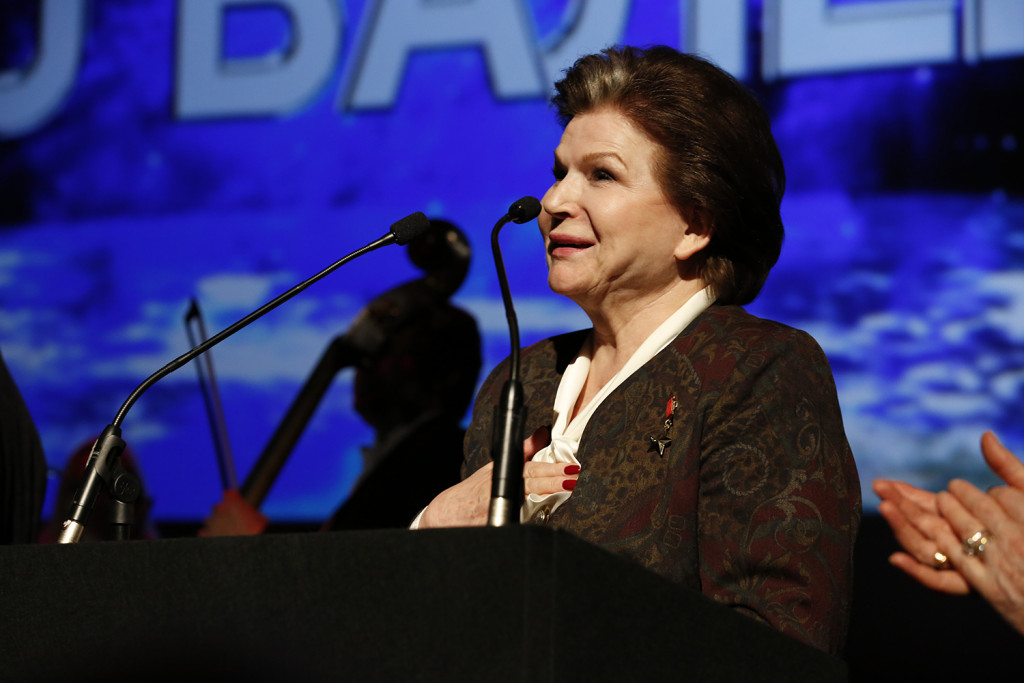
Doug Millard, Deputy Keeper of Technologies and Engineering and Curator of ‘Valentina Tereshkova: First Woman in Space’ said “Valentina Tereshkova epitomises the can-do spirit that propels humanity to great things. As the first woman in space and still, the only one to have flown a solo space mission, her story continues to be an inspirational one for millions.”
Following the unveiling of Tim Peake’s Soyuz spacecraft in January by the first ESA astronaut, along with a VR experience, this exhibition marks another key event in the 2017 UK-Russia Year of Science and Education.
Because of her proletarian origins, Tereshkova was a Soviet propaganda dream come true. Her mother was a textile factory worker and her father a tractor driver and war hero, who was killed during the Soviet Finnish conflict of 1940.
Fascinated by skydiving, Tereshkova joined the local aviation club in her home town of Yaroslavl in 1959, aged 22. After her first parachute jump, she wrote that she wanted to do it ‘every day’.
Inspired by the launch of Yuri Gagarin in 1961, she would sit on the banks of the Volga, dreaming of piloting a spaceship. In the spring of 1962, Valentina Tereshkova was selected as a cosmonaut candidate, by which time she had completed over 120 jumps.
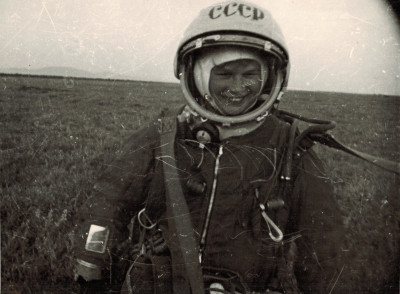
Early one morning, Tereshkova set off for a closed military installation, Star City, near Moscow. Sworn to secrecy, she had told her mother that she was “being recruited to be a parachutist in the Russian national team.”
Gagarin (“we looked to him as a god”, she recalls) would visit the trainee female cosmonauts in Star City to offer them encouragement in what was a boot camp with a gruelling regime, from a centrifuge, nicknamed the ‘devil’s mill’, to isolation tanks. It was, she recalled, like “renouncing life on Earth.”
Despite the scepticism of male peers, Tereshkova was selected for launch from the original crop of 400 candidates. She described how, after completing her communication and life-support checks in the craft, she felt no fear, only excitement of the kind that electrifies athletes before a competition.
Tereshkova was launched from obscurity to global fame on 16 June 1963. Her Vostok-6 rocket thundered into life at 12.30 Moscow time, after a two-hour countdown.
She recalled how the spaceship rose slowly over the launchpad, like some great creature, as she shouted: “Hey, sky, take off your hat, I’m coming to see you!”
As it accelerated, g-forces began to push her against her seat, making it harder to breathe. She could be heard over the radio chanting her call sign: “Ya Chaika, Ya Chaika” [I am Seagull]
Tereshkova orbited t Earth 48 times over three days, logging more flight time than all American astronauts combined up to that date.
Like Gagarin, she had to eject at a height of seven kilometers after the re-entry, during which the exterior of her capsule had heated to 1500 degrees.
After 16 minutes of fiery and turbulent descent, when she was no longer weightless, an ejection mechanism triggered. “I catapulted out of the spacecraft and parachuted down,” she said.
Rather than falling to Earth in Kazakhstan, she had ended up in the Altai region of what is now the Russian Federation. Her heavy parachute, which billowed open at four kilometers, could not be steered as she floated over a lake. “I begged God not to land on water,” she said. “God heard my prayers and allowed me to land on the shores.”
Curious locals started to take an interest in stripping her craft. Tereshkova, who had been bruised by her descent, “showed them my pistol” she recalled and shouted: “leave my parachute alone”. The tense encounter ended amicably. They gave her milk, eggs, bread, and honey. After space, she said, “nothing from a delicatessen can compare” with “simple village food.”
Tereshkova reciprocated by giving the excited locals her cosmic rations, later earning a stern reprimand for disobeying his orders to only eat space food. Even so, she was awarded the titles of Hero of the Soviet Union, Cosmonaut-Pilot of the USSR and the Order of Lenin.
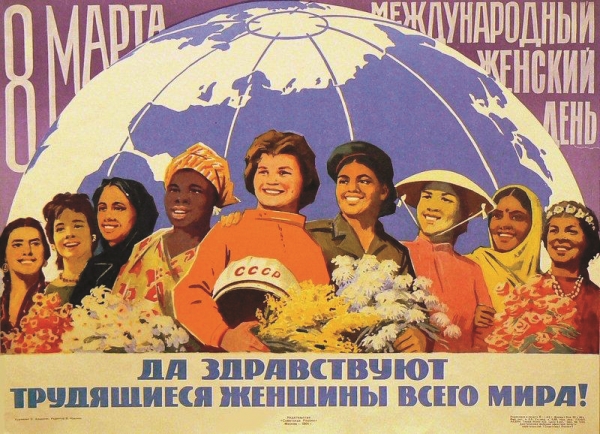
A star was born. Women imitated her hairstyle and fashion. Tereshkova featured in postcards, posters, children’s stories, toys and on T-shirts too.
The ‘modest Yaroslavl girl’ became an ambassador-of-goodwill for the Soviet government. In all, Tereshkova made 42 foreign trips between 1963 and 1970, receiving more invitations than even the great Gagarin.
She fell in love with a fellow cosmonaut, Andriyan Nikolaev, leading to the first ever ‘space marriage’. Their daughter Alyonka, born in 1964, was hailed as the first ‘space baby’.
Tereshkova was also the first civilian to go into space, the Russians and Americans who were launched into the cosmos before her had all been servicemen.
The ‘First Lady of Space’ would never fly again but her mission remains a milestone in pioneering space exploration. It would be another 20 years before the next woman went into space.